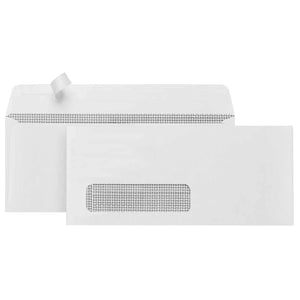It’s performance assessment time. Does that send dread coursing through your body? 😱 Or do you look forward to the opportunity to share and gather constructive feedback from your team?
Performance review meetings often get a bad reputation, but they are an incredibly valuable asset to both managers and direct reports. When done well, they provide a clear path for employees to improve and advance their career while giving managers the opportunity to connect with the individuals on their team about what’s going well and what could be improved. Learn how to run effective performance assessments that your direct reports won’t dread.
What is a Performance Assessment?
Professional performance assessments are an opportunity for management, team leaders, or business owners to share feedback with a direct report about their recent and current performance. Ideally, these meetings provide encouragement and constructive feedback that will motivate the employee and help them further their professional development.
A positive performance vs. bad performance review for an employee can lower morale, spark resentment, and make employees dread one-on-one meetings. The performance assessment should judge employee effectiveness, but ideally, the feedback will be packaged in a kind and constructive format.
So, how do you run effective employee report meetings that your team actually looks forward to? Follow our performance review tips for thoughtful, actionable feedback aimed at helping an employee grow and succeed.

1. Schedule With Regularity
No one wants a surprise performance review. When a performance based assessment is sprung on an employee out of the blue, it breeds doubt and suspicion and puts the employee on edge. Why now? Did they do something wrong? Are they about to be laid off or fired?
It’s natural to feel suspicious of a surprise performance review, but when these meetings are scheduled regularly, employees (and managers) know exactly what to expect. A performance review is not a reason to worry—it’s a consistently scheduled meeting that provides the employee with an update on their current performance and how they can further their own goals as well as the goals of the team.
Performance reviews don’t need to occur as often as one-on-ones, but they need a consistent cadence to ensure they’re never regarded with suspicion and to optimize their effectiveness. You might schedule mid-year performance reviews at the beginning of every quarter or run mid-year reviews every six months at the beginning and middle of the year. Depending on the needs and the size of your team, you might schedule performance assessments every three, four, six, or 12 months.

2. Open With Ice Breakers and Rapport Building
Even when performance reviews occur with regularity, they can still be nerve-racking for both parties. To break the ice and help your direct report get more comfortable, don’t jump into the review right away. Budget specific meeting time dedicated to icebreakers and rapport building.
A short game or series of interesting questions can help both you and the employee relax before you get down to business. What do you remember about this direct report from your previous meeting? If they mentioned a specific hobby, you can check in on how that is going. If you know they are an avid movie buff, ask them what new movies they’ve seen lately. Is there anything they’d recommend?
People love to talk about themselves, and the fact that you remembered something specific from a previous conversation or meeting will mean a lot to your team members. It shows that you were actively listening and you’re interested in what they have to say. This is especially important for your more reserved, introverted team members who may not be ready to open up right away.
📚 Learn more about Personalities in the Workplace - Introverts vs. Extroverts.
Be sure to jot down a few notes during the meeting as well as after the meeting ends. You can then look back at these notes before your next one-on-one or performance review. Refresh your memory before the meeting begins so that you can ask tailored questions based on what you know about that employee.
Building rapport will help your direct report feel more comfortable, and it will help them take your feedback in stride. Your direct report will more easily open up about their goals if you make an effort to put them at ease. This rapport builds trust, which will go a long way toward maintaining your direct report’s overall happiness with their job.

3. Frame Feedback Constructively
As a manager, your role in the performance review process is not to ridicule the employee or to complain about their performance. As you provide feedback, ensure you are always being constructive and leading the employee down the path that most effectively optimizes their personal and professional development.
Calling someone out for doing a bad job will only cause that employee to become defensive, breeding resentment and preventing any actual change.
Instead, make sure you are sandwiching any negative feedback in between other pieces of positive feedback. Even if you need to dig deep, ensure you are discussing an employee’s strengths and what they are offering to the team. What are they doing well? What assets are they providing to the team? What unique skills or personality traits are they adding to the business as a whole?
When speaking about any negatives surrounding an employee’s performance, frame them in a way that helps the employee improve. Instead of saying, “you are terrible at getting your work done on time and you’re always missing deadlines,” say, “ do you find you struggle with meeting deadlines? One area I think you could improve upon in order to better assist your team is to focus on your time management. Is there anything I can do to assist you with this?”
Ask the employee questions to determine whether or not you see eye to eye. Let them know how their improvement in this area would benefit the whole team, and ask what you can do to help them make progress in this area. Remember that performance reviews are about helping teammates improve; these meetings are not opportunities to make employees feel bad about the past.

4. Plan in Advance With a Clear Agenda
No matter the type of meeting you are planning, a clear meeting agenda is an absolute must. As a manager, establish a performance assessment meeting agenda template that you can adjust based on the needs of each meeting and employee.
How long will the meeting be? What discussion topics will be covered? Is there anything the employee should prepare in advance?
Ask your direct report if they have anything to contribute to the meeting agenda. Depending on whether or not you also complete consistent one-on-ones, this may be the employee’s opportunity to ask questions and engage with you about their current and future goals. If you don’t regularly meet with this employee, ensure there is enough time built into the meeting for them to address any issues, concerns, or questions they have.
Collaborative meeting agendas are the most effective because everyone involved can take ownership over how the meeting will run. Plus, collaborative agendas ensure there is enough time allotted for the meeting and that all relevant topics are covered.

5. Solicit Feedback
A performance review is designed to provide feedback to an employee, but great performance reviews also take the time to collect feedback from direct reports.
Gathering feedback from employees can help you improve your management style as well as the functions of the business. What does the employee think is going well? What would they improve? What would they do differently? Do they have any specific feedback about your management style? Any and all feedback should be considered a learning opportunity.
In addition to asking for feedback about the way you manage and how the business is running, collect feedback on the performance assessment process. Are the meetings helpful? What would the employee like to see more of? What would they like to see less of? Do they feel like they received helpful feedback that they are easily able to implement? Is the meeting too long, too short, or just right?
Feedback is your gateway to improvement—gather it often, make it actionable, and put it into practice.
More From Blue Summit Supplies
💡Utilizing the Enneagram in Workplace Situations: A Guide for Managers and Leaders
💡 Transparent Communication in the Workplace
We’re dedicated to helping businesses improve communication, productivity, and wellness. Follow our office supplies blog for the latest trends, office strategies, product comparisons, and more.
Do you have other performance review strategies to add to our list? Leave a comment below to let us know how you run effective performance assessments. If you have any questions about our content or any of our products, send us an email. We’d love to hear from you!
 For more informative articles about office supplies, subscribe to our email newsletter!
For more informative articles about office supplies, subscribe to our email newsletter!
Never fear, you won't begin receiving daily sales emails that belong in a spam folder. Instead, we promise a fun weekly roundup of our latest blog posts and great finds from across the web. And if you lose interest, it's always easy to unsubscribe with a single click.









